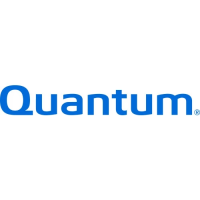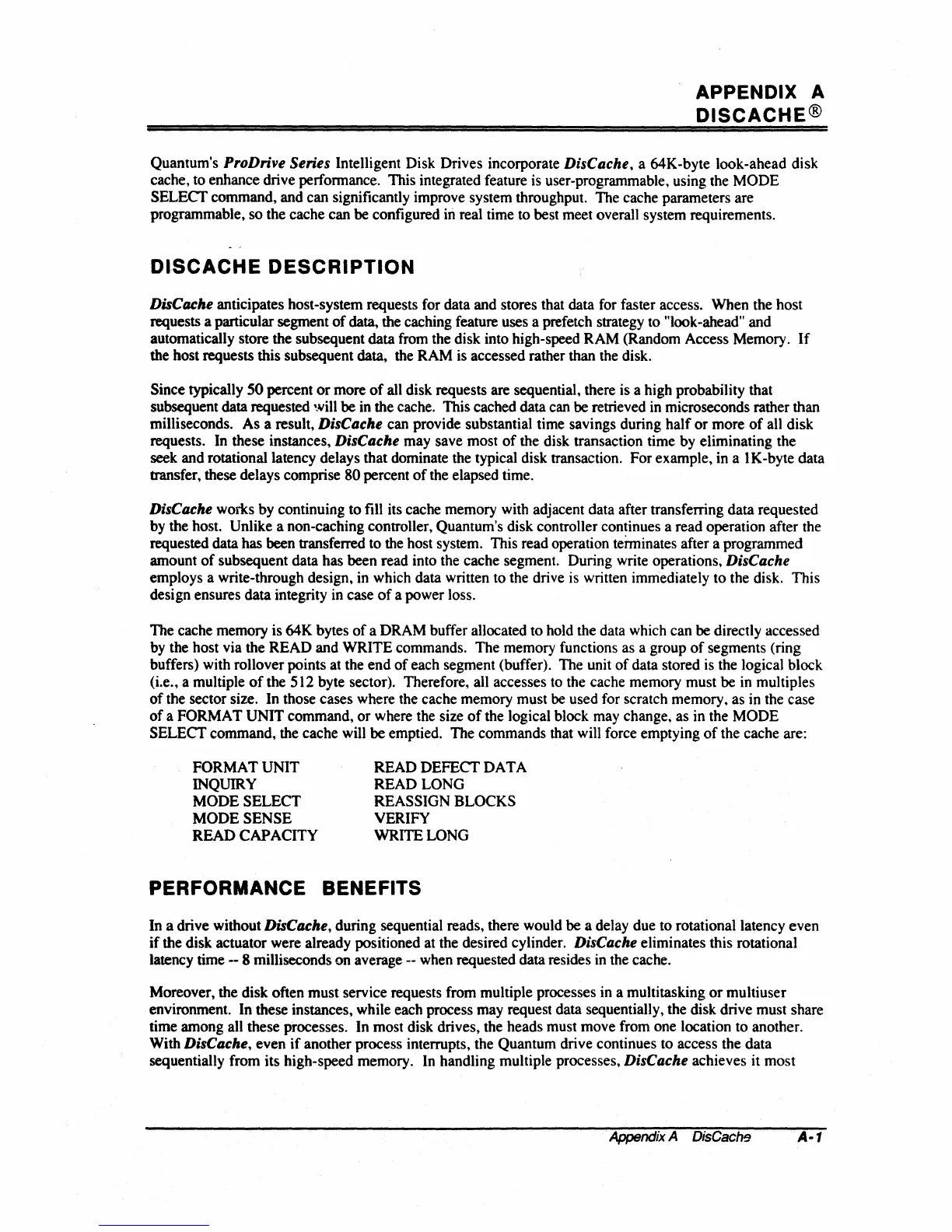APPENDIX A
DISCACHE®
Quantum's ProDrive Series Intelligent Disk Drives incorporate DisCache, a 64K-byte look-ahead disk
cache, to enhance drive performance. This integrated feature
is
user-programmable, using the MODE
SELECf
command, and can significantly improve system throughput. The cache parameters are
programmable, so the cache can be configured
in
real time to best meet overall system requirements.
DISCACHE
DESCRIPTION
DisCache anticipates host-system requests for data and stores that data
for
faster access. When the host
requests a particular segment
of
data, the caching feature uses a prefetch strategy to "look-ahead" and
automatically store the subsequent data
from
the disk into high-speed RAM (Random Access Memory.
If
the host requests this subsequent data, the RAM
is
accessed rather than the disk.
Since typically 50 percent
or
more
of
all disk requests are sequential, there
is
a high probability that
subsequent data requested will be
in
the cache. This cached data can be retrieved
in
microseconds rather than
milliseconds. As a result, DisCache can provide substantial time savings during half or more
of
all disk
requests. In these instances, DisCache may save most
of
the disk transaction time
by
eliminating the
seek and rotational latency delays that dominate the typical disk transaction. For example, in a lK-byte data
transfer, these delays comprise 80 percent
of
the elapsed time.
DisCache works by continuing to
fill
its cache memory with adjacent data after transferring data requested
by
the host. Unlike a non-caching controller, Quantum's disk controller continues a read operation after the
requested data has been transferred to the host system. This read operation terminates after a programmed
amount
of
subsequent data has been read into the cache segment. During write operations, DisCache
employs a write-through design,
in
which data written to the drive
is
written immediately to the disk. This
design ensures data integrity
in
case
of
a power loss.
The cache memory is 64K bytes
of
a DRAM buffer allocated to hold the data which can be directly accessed
by
the host via the READ and WRITE commands. The memory functions as a group
of
segments (ring
buffers) with rollover points
at
the end of each segment (buffer). The unit of data stored
is
the logical block
(i.e., a multiple
of
the
512
byte sector). Therefore, all accesses
to
the cache memory must be
in
multiples
of the sector size. In those cases where the cache memory must be used for scratch memory, as
in
the case
of
a FORMAT UNIT command, or where the size
of
the logical block
may
change, as
in
the MODE
SELECT command, the cache will be emptied. The commands that will force emptying
of
the cache are:
FORMAT UNIT
INQUIRY
MODE SELECT
MODE SENSE
READ CAPACITY
READ
DEFECf
DATA
READ LONG
REASSIGN BLOCKS
VERIFY
WRITE LONG
PERFORMANCE BENEFITS
In a drive without DisCache, during sequential reads, there would be a delay due to rotational latency even
if the disk actuator were already positioned at the desired cylinder. DisCache eliminates this rotational
latency time -- 8 milliseconds on average
--
when requested data resides
in
the cache.
Moreover, the disk often must service requests from multiple processes
in
a multitasking
or
multiuser
environment. In these instances, while each process may request data sequentially, the disk drive must share
time among all these processes. In most disk drives, the heads must move from one location to another.
With DisCache, even
if
another process interrupts, the Quantum drive continues to access the data
sequentially from its high-speed memory.
In
handling multiple processes, DisCache achieves
it
most
Appendix A
DisCach~
A-1

